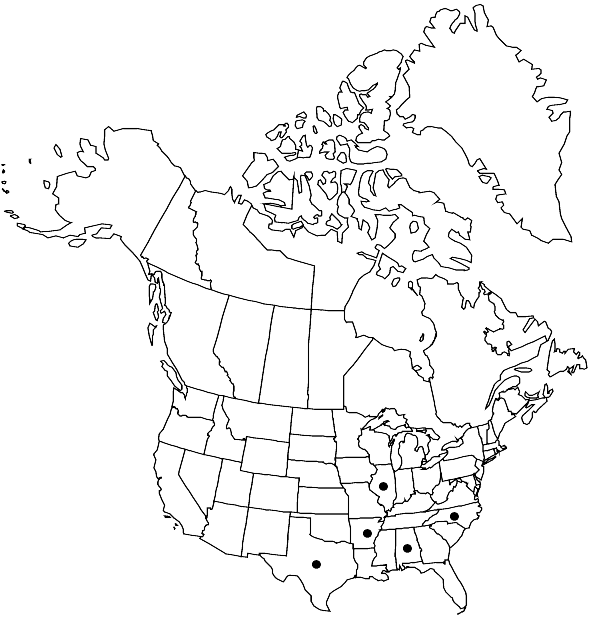Difference between revisions of "Bruchia hallii"
Bull. Torrey Bot. Club 5: 21. 1874,.
imported>Volume Importer |
imported>Volume Importer |
||
| Line 45: | Line 45: | ||
|publication year= | |publication year= | ||
|special status= | |special status= | ||
| − | |source xml=https:// | + | |source xml=https://bitbucket.org/aafc-mbb/fna-data-curation/src/2e0870ddd59836b60bcf96646a41e87ea5a5943a/coarse_grained_fna_xml/V27/V27_620.xml |
|genus=Bruchia | |genus=Bruchia | ||
|species=Bruchia hallii | |species=Bruchia hallii | ||
Latest revision as of 22:27, 5 November 2020
Distal leaves ovate to very short-lanceolate, 0.7–1.3 mm, leaf base not differentiated in shape; distal laminal cells short-rectangular. Sexual condition paroicous. Seta 0.4–1.7 mm. Capsule neck short, obovate. Spores densely spinose. Calyptra smooth
Phenology: Capsules mature late winter–spring.
Habitat: Soil
Elevation: low to moderate elevations
Distribution

Ala., Ark., Ill., N.C., Tex.
Discussion
The short leaves and short seta are good field characters for Bruchia hallii, but the spores must be examined to distinguish it from B. fusca.
Selected References
None.
Lower Taxa
None.
... more about "Bruchia hallii"